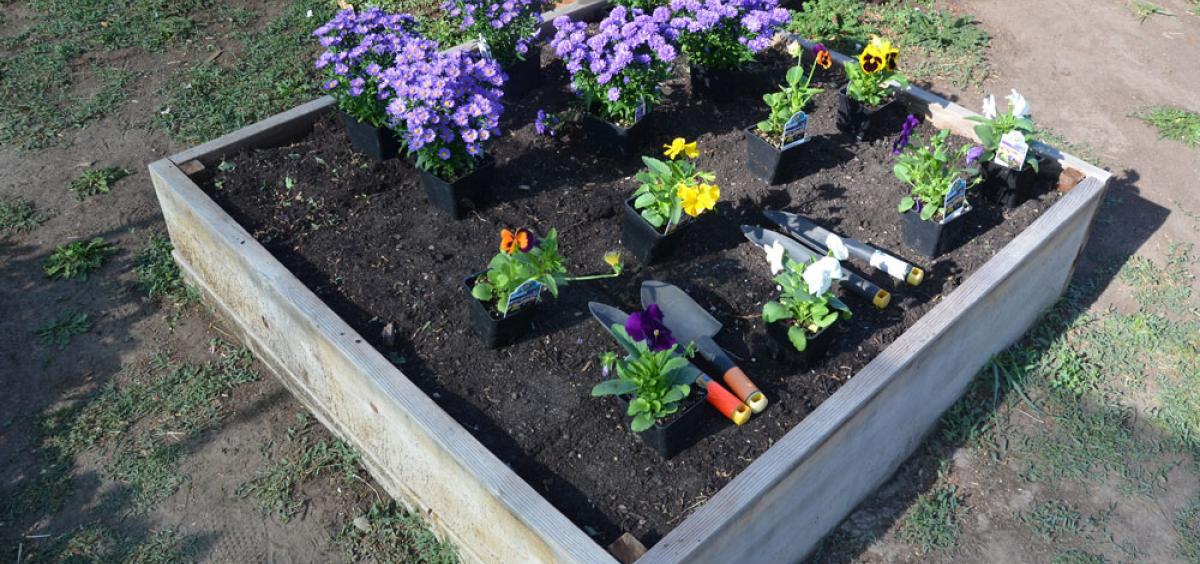
CORVALLIS, Ore. – Gardening is one of the more therapeutic things a person can do – emotionally, mentally and physically – but for some it seems out of reach.
Good design and practices can make gardening accessible for everyone.
“We all have challenges if we live long enough,” said Corinne Thomas-Kersting, a retired speech-language pathologist and nine-year Oregon State University Extension Service Master Gardener. “We have different challenges. Even when you’re young and healthy there are things to do to prevent future disabilities.”
Thomas-Kersting advocates “universal” garden design – planning the landscape so that anyone can access and enjoy it.
“It is my deeply held belief that we don’t need to label people as having a disability versus being ‘normal,’” she said. “Using universal design benefits us all.”
There are many ways to design a universal garden. Being aware of Americans with Disabilities Act measurements for pathways, using raised beds and appropriate tools are good starting points, but Thomas-Kersting said there are many ways to invite anyone into the garden and protect the gardener from injury or future problems.
For instance, a garden can be designed for a person with a visual impairment with water features, fragrant plants, ornamental grasses that make a gentle sound as they blow in the wind and bright, contrasting colors.
“For me, I really love to touch things,” she said. “I’m gently touching things when I’m in another garden. Think about texture – smooth, fuzzy, lacy, sharp. Variety and diversity in the garden and mindfulness in how it’s designed opens up the opportunity for more people to enjoy it. And you enjoy it, as well.”
A new Extension publication, “Gardens are for Everyone,” gives tips for creating accessible home and community gardens, including design, navigation, tools and equipment and plant selection.
In her own garden, Thomas-Kersting redid some steps into a ramp. Not only does it allow people in wheelchairs to traverse the path, but it makes it easier to move the wheelbarrow from one area of the garden to another. And, she says, it looks better with a slopping, continuous path rather than the steps.
Stretching, resting and using the correct tools top the list of approaches to avoid injuries and mitigate disabilities of everything from mobility limitations to medical challenges such as arthritis. Have benches and chairs sprinkled throughout the garden as places to rest. Keep water around to sip while you sit. Stretch or walk a bit before and after time in the garden.
Ergonomic tools are available in a variety of prices. Look for curved handles and indentations for fingers on smaller tools or modify yours by wrapping them with water pipe insulation, bicycle handles or tape used to wrap golf clubs. Check that handles on larger equipment are long enough so you can keep your back straight. Tools shouldn’t be too heavy. Choose those made from aluminum, which is lighter than steel. Sometimes, lightweight children’s tools will do the job.
There’s much more you can do. Here are some tips to increase the ease of gardening:
About the OSU Extension Service: The Oregon State University Extension Service shares research-based knowledge with people and communities in Oregon’s 36 counties. OSU Extension addresses issues that matter to urban and rural Oregonians. OSU Extension’s partnerships and programs contribute to a healthy, prosperous and sustainable future for Oregon.
Kym Pokorny, 541-737-3380, [email protected]
Click photos to see a full-size version. Right click and save image to download.